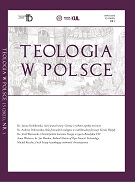Wraz z końcem teologii neoscholastycznej musiała zostać na nowo zdefiniowana relacja między dogmatyką, która jest teraz rozumiana historiozbawczo, a egzegezą, która posługuje się (między innymi) metodą historyczno-krytyczną. Solidne podstawy ku temu stworzyła konstytucja dogmatyczna o Objawieniu Bożym Dei Verbum Soboru Watykańskiego II. Opierając się na niej, niniejszy tekst reprezentuje tezę, że kościelna interpretacja Pisma Świętego przez stulecia, czyli w ramach żywej Tradycji, i interpretacja historyczno-krytyczna stanowią dwa różne podejścia do Biblii, które nie powinny być sobie przeciwstawiane. Tylko w ich wzajemnym oddziaływaniu można czytać i rozumieć Biblię jako Słowo Boże (!) dzisiaj, a nie tylko jako tekst historyczny.
SUMMARY
HOW EXEGESIS INFLUENCES DOGMATICS?
With the end of neoscholastic theology, there was a necessity of new definition of relation between dogmatics, which is now understood from the perspective of history of salvation, and exegesis which, among other methods, uses a historicocritical method. Fundamentals of that new understanding have been given by the constitution Dei Verbum of Vaticanum II. Reffering to this document, the article presents the thesis that the interpretation of the Holy Scripture by the Church through the ages, that is in the living Tradition, and historicocritical interpretation are two different approaches which, nevertheless, should not be contradicted. What is more, we can read the Bible and understand it not just as a historical text but as the Word of God for today, only when we take into account the mutual influence of these two approaches.
Ostatnia aktualizacja: 06.02.2019, godz. 11:15 - Marcin Walczak































